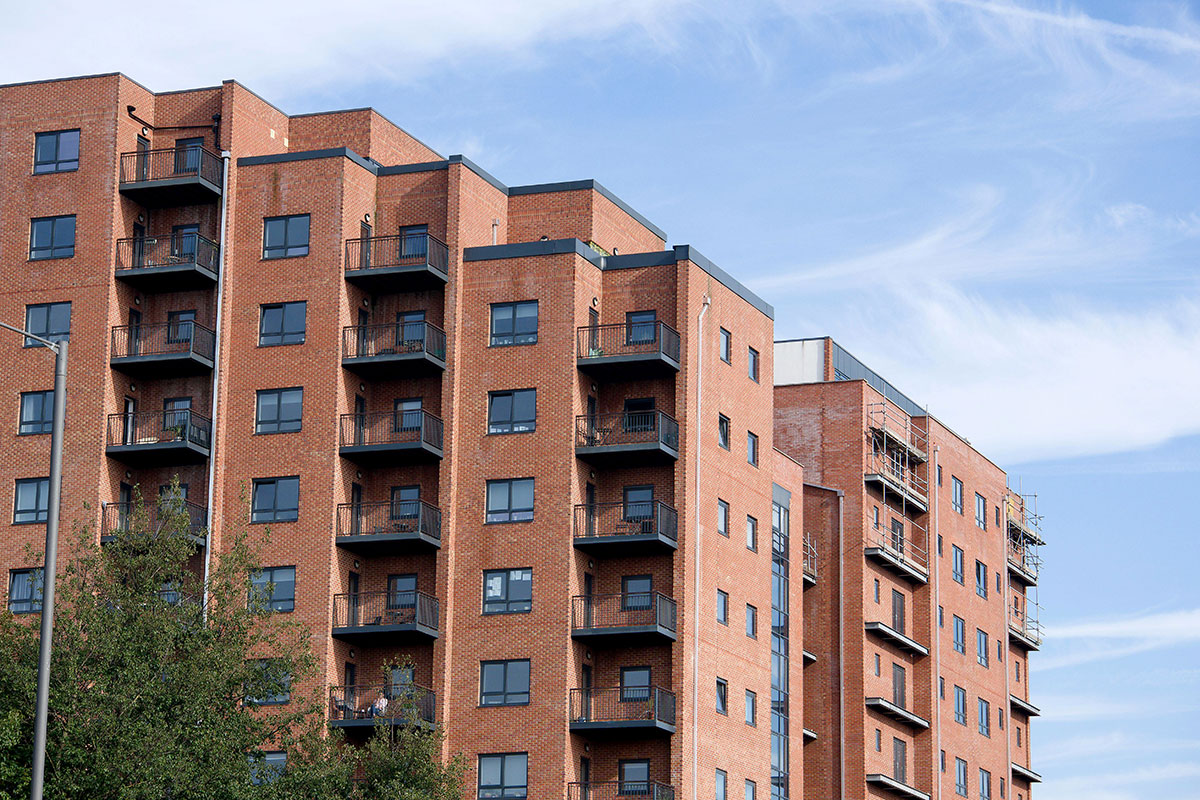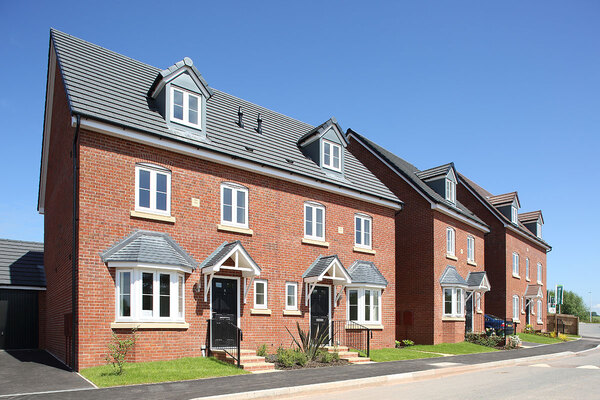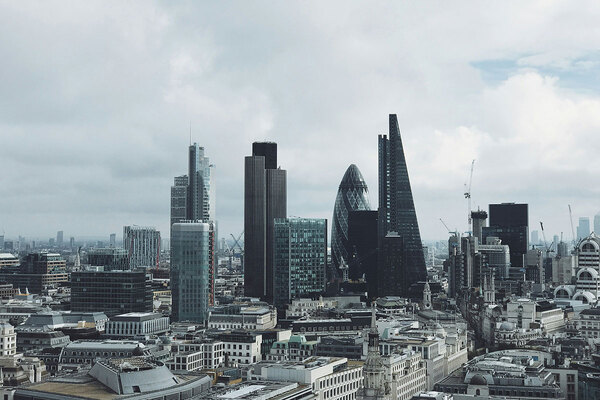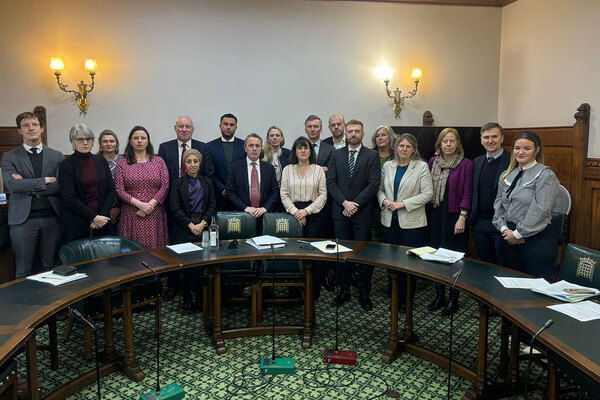CPD module: how have fire safety regulations changed and how can providers remain compliant?
Recent legislation aims to improve fire safety in buildings by increasing accountability and improving fire risk assessments. Andy Frankum, chair of the National Social Housing Fire Strategy Group, explains more.
Read the article, take a test, earn CPD minutes

In association with:

Learning outcomes
After reading this article, learners will be able to:
- Explain the changing approach to fire safety in England and Wales over recent years
- Summarise the relevant pieces of legislation and changes they have brought about
- Describe what these changes mean in practice for the housing sector
- Explain the golden thread of information
- Describe the roles of responsible persons and accountable persons
- Explain the role of residents and resident engagement in today’s fire safety context
This article, in association with fire safety product provider Gerda Security Products, will detail the changes to fire safety legislation in England and Wales over recent years, and the implications for social landlords and the wider housing sector. It will describe the pre-existing context around fire safety, and will then explain the three relevant pieces of legislation that have come into force since the start of the decade: the Fire Safety Act 2021, the Fire Safety (England) Regulations 2022 and the Building Safety Act 2022.
The article will summarise the changes brought about by each piece of legislation, and the responsibilities they place on housing providers.
What was the legislative landscape around fire safety before 2020?
The Regulatory Reform (Fire Safety) Order 2005 – or Fire Safety Order – is the main piece of legislation governing fire safety in buildings in England and Wales.
This legislation significantly impacted social landlords by making them legally responsible for fire safety in common areas of multi-occupied residential buildings.
The Fire Safety Order placed a duty on social landlords to conduct fire risk assessments, implement safety measures, and ensure the ongoing maintenance of fire prevention systems, and set out penalties, including fines or imprisonment, for non-compliance.
The Fire Safety Order also defined the role of the ‘responsible person’ for the first time – typically the building owner or manager who must assume much of the responsibility for fire safety (see box: What is a responsible person?).
A decade later, the Smoke and Carbon Monoxide Alarm (England) Regulations 2015 required landlords to install at least one smoke alarm on every storey of a property used as living accommodation, and to ensure these alarms are in working order before the start of each new tenancy.
This law also requires landlords to install carbon monoxide alarms in any room containing a solid fuel-burning appliance.
What was the context behind the pieces of legislation passed since then?
The three pieces of legislation detailed in this article were brought into being and shaped in part as a response to two tragic events: the fire at Lakanal House, a tower block in south London in 2009, in which six people died; and the fire at Grenfell Tower in west London in 2017, in which 72 lives were lost.
These events led to further changes to regulations with the introduction of the Fire Safety Act 2021, the Fire Safety (England) Regulations 2022 and the Building Safety Act 2022. The aim of these changes is to help prevent future deaths and to ensure the fire safety system delivers its intended outcomes.
What changes did the Fire Safety Act bring?
This is a relatively small piece of legislation – only four pages long – that extends the scope of the Fire Safety Order. The Fire Safety Act 2021 clarifies that where a building contains two or more domestic premises, the responsibilities placed on landlords by the Fire Safety Order also apply to the structure and external walls. This includes cladding, windows and balconies.
The act also makes landlords and building managers responsible for the fire safety of entrance doors to individual flats within the building. This was intended to clear up any grey areas around, for example, the entrance doors to leaseholders’ flats.
That year, to accompany the act, the government also released a Fire Risk Assessment Prioritisation Tool. This online tool asks a set of weighted questions to help responsible persons understand where to prioritise a review of their fire risk assessments, to ensure they take into account the new requirements as set out in the act.
What is a responsible person?
The definition and responsibilities of a ‘responsible person’ were established by the Regulatory Reform (Fire Safety) Order 2005.
This individual is tasked with ensuring fire safety in the communal areas of multi-occupied residential properties.
This person is typically the building owner, or manager, and their duties include conducting fire risk assessments, implementing fire prevention measures, maintaining fire safety equipment, and ensuring clear emergency routes and exits. They must also provide fire safety training and information to occupants or employees and regularly review fire safety procedures.
The responsible person has a legal obligation to reduce fire risks and ensure compliance with the regulations. Penalties for failure can include fines or imprisonment.
This marked a significant shift from the preceding fire safety regime, which focused on issuing fire certificates for specific buildings. Under the Fire Safety Order, the focus moved to a more proactive, risk-based approach, where the responsibility for fire safety was placed directly on the building owner or occupier. This change was intended to create a more flexible approach to fire safety by tailoring it to individual buildings and by encouraging ongoing management of fire risks, rather than basing it on a one-time certification.
It also aimed to deliver greater accountability and oversight around fire safety on the part of building owners and managers.
What changes did the Fire Safety (England) Regulations 2022 bring about?
These regulations, which came into force in January 2023, implement many of the recommendations made to the government in the Phase 1 report of the Grenfell Tower Inquiry. They introduce several new requirements for responsible persons, particularly with regard to high-rise buildings. The new requirements are divided into three categories: high-rise buildings, buildings over 11 metres in height, and buildings that contain two or more residential units.
In high-rise buildings (buildings over 18 metres tall, or with seven or more storeys), responsible persons must ensure:
- Electronic copies of building plans and details of external wall systems are provided to their local fire and rescue service
- Secure information boxes are installed on the premises, and contain information such as floorplans, the building layout and the location of firefighting equipment for use by the fire service when it attends
a fire - Clear fire safety instructions are provided to all residents, including guidance on how to report a fire and evacuation procedures
- Wayfinding signage is installed on each floor to help firefighters get to where they need to be
- Monthly checks are performed on firefighting lifts and other firefighting equipment
For all buildings over 11 metres in height, the responsible person must:
- Conduct yearly checks of flat entrance doors and quarterly checks of all fire doors in communal areas as per the Fire Safety (England) Regulations 2022 fact sheet.
And for all buildings containing two or more properties, the responsible person must:
- Provide residents with information relating to the importance of fire doors
- Provide residents with all relevant fire safety instructions, such as how to report a fire, and what to do once a fire has started (based on the evacuation strategy for the building in question)
What is the scope of the Building Safety Act?
This act contains a major set of reforms, and is one of the biggest pieces of legislation governing the built environment to be passed since World War II. It was drawn up in response to Dame Judith Hackitt’s report, Building a Safer Future, which was commissioned by the government following the fire at Grenfell Tower. As Dame Judith’s report states in its opening paragraph: “The current system of building regulations and fire safety is not fit for purpose.”
The Building Safety Act aims to rectify that failure. It focuses on ‘higher-risk buildings’; these are defined as buildings with at least seven storeys, or which are at least 18 metres tall, and which contain at least two residential properties. Care homes which meet the height threshold are also included.
The Royal Institution of Chartered Surveyors (RICS) estimates that there are around 12,500 such buildings across England, 6,000 of which are owned by social landlords.
What does the act mean for fire safety in social housing?
- A new regulator: The act established a new regulator for higher-risk buildings – the Building Safety Regulator (BSR), which is run by the Health and Safety Executive.The BSR oversees planning and design, as well as the safety of existing buildings. Social landlords must register all the higher-risk buildings under their control with the BSR.
- Accountable persons: The act introduced and defined two new roles: accountable persons (AP) and principal accountable persons (PAP). These positions can be held either by organisations such as social landlords, or by individuals. An accountable person is the organisation or individual who owns or has a legal obligation to repair any common parts of the building, such as corridors, lobbies and staircases, as well as the building’s structure and exterior. APs have a legal responsibility to manage the fire safety risks for their building, or part thereof. Every higher-risk building must also have a PAP. If a building only has one AP, then they are also the PAP. If there is more than one AP in a building, then the AP with responsibility for its structure is the PAP. This change was brought in primarily to bring clarity to buildings with complex contractual arrangements – where social rent, leasehold and privately owned flats are all under the same roof, for example. This means that someone is always accountable for a given building. Every high-rise building must be registered with the BSR; this is also the responsibility of the PAP.
- The safety case regime: This approach to fire and building safety has been ported from high-risk industries – rail, heavy industry and nuclear, for example – and applied to higher-risk buildings by the act. It compels PAPs to prepare a safety case report for their building, which must be submitted to the BSR as part of the registration process. The safety case must contain information about the building – such as its address, location and number of residents – and must also set out what is called a ‘safety argument’, which includes all the processes and systems that keep the building safe. This argument must be supported by documentary evidence such as gas safety and electrical certificates. The regulator will scrutinise and challenge these reports to ensure the PAP has prepared and given proper thought to a full fire safety risk assessment.
- The golden thread of information: The golden thread is a digital record of information about the design, construction and maintenance of a building. It is the responsibility of the PAP to maintain this record and keep it up to date. This information feeds into the safety case regime described above.
The Building Safety Act requires that the golden thread of information is:
- Stored digitally
- Kept securely
- A building’s single source of truth
- Available to people who need the information to do a job, as and when they need it
- Presented in such a way that it can be easily used
The government hasn’t specified how organisations should store this information. It has established the wider legal framework, but it is up to organisations to ensure they have the right systems in place, that they are managing that data safely and securely, and that they can demonstrate that to the regulator. The golden thread should begin at the design stage, and continue all the way through the building’s life cycle. For buildings that are already occupied, the PAP must gather and store:
- The building’s health and safety file
- Its safety case report (see above)
- The resident engagement strategy
- A mandatory occurrence reporting system – the system for reporting building safety incidents and risks
The PAP must also gather and store relevant documentation about the building, such as:
- Information about any refurbishments
- Information about the building from previous owners (including inspection reports and maintenance records)
- Which building regulations were current at the time of construction (ie what standard the building was built to)
- Gateways. This part of the act applies to housing providers that design and develop high-rise buildings.The act specifies three ‘gateways’: these are checkpoints during the planning, design and construction stages of a building’s life cycle that exist to eliminate or prevent any inherent safety flaws or inadequate safety considerations, to ensure accountability among designers and developers, and to establish a clear documentation trail from the start of a construction project. The BSR must sign off each project at each gateway before it can proceed. The gateway regime applies to the construction of new high-rise/higher-risk buildings (HRBs) and to building work in an existing high-rise building, or the extension of a building to create an HRB.
What part do residents play?
The resident voice is absolutely critical in fire safety. Residents can help landlords understand what is going on in their building, while landlords must provide their residents with the information they need to prevent, respond to and protect themselves from fire risks.
The Building Safety Act places a strong emphasis on resident engagement. It requires social landlords to develop and implement a resident engagement strategy; this strategy sets out how landlords will involve residents in making decisions about building safety. Residents must also be consulted about key decisions, such as proposed changes to fire prevention measures.
The act also requires landlords to be open and transparent with residents, and to provide up-to-date information on fire safety. This includes a guide to the safety measures that are in place, information about evacuation procedures, and notifications about upcoming maintenance or changes to fire safety procedures. It also requires landlords to establish a transparent system through which residents can raise concerns and complaints, as well as set out how – and to what timescale – those complaints will be investigated.
Areas to reflect on
- How have you had to adapt to the new fire safety regime in your role? What have you found most challenging and how have you/your organisation overcome the challenges?
- How have the new regulations improved fire safety? Do they go far enough? How much of a role do residents play in your organisation’s approach? Could that be improved?
- What one point in this piece do you want to share with colleagues who may not have read it? How will you share it?
Summary
The Regulatory Reform (Fire Safety) Order 2005 is the foundational piece of legislation for fire safety in England and Wales; the subsequent pieces of applicable legislation are built upon it. It defined the roles of ‘responsible persons’, and reoriented the fire safety regime around risk assessments and accountability.
Since 2020 there have been three pieces of legislation that have changed the way social landlords must approach fire safety: the Fire Safety Act 2021, the Fire Safety (England) Regulations 2022 and the Building Safety Act 2022. The latter is the most comprehensive. It applies to what are termed higher-risk buildings – those with seven or more storeys, or which are more than 18 metres high – and puts residents and resident engagement at the heart of fire safety.
Now get your CPD minutes
Next, answer the questions below. Get all the questions correct and you will receive a certificate confirming your award of 30 CPD minutes within 10 working days via email. Get any questions wrong and you can retake the test by refreshing your web browser.
References and further reading
- Building Engineering Services Association (2023), Understanding the Building Safety Act Gateways
CIOB (2024), Building Safety Act 2022 Advice & Guidance - Dame Judith Hackett (2018), Building a Safer Future
- HSE (2024), Keeping information about a higher-risk building: the golden thread
- Making Buildings Safer (2022), Roles and Responsibilities for High-Rise Residential Buildings
- The National Fire Chiefs Council (2021), Fire Safety Act 2021 FAQs
- National Housing Federation (2023), Engaging with residents on building safety
- RICS (2024), How BSR ensures fire safety in high-rise buildings
Inside Housing CPD content archive
Find out more about Inside Housing’s CPD offering by clicking here
Fostering data-driven engagement with residents on fuel poverty
Watch the full webinar at the end of this article in association with Switchee, Fostering data-driven engagement with residents on fuel poverty
How have fire safety regulations changed and how can providers remain compliant?
Recent legislation aims to improve fire safety in buildings by increasing accountability and improving fire risk assessments. Andy Frankum, chair of the National Social Housing Fire Strategy Group, explains more
Tenancy fraud – how to spot it and how to fight it
Stephanie Toghill of Islington Council and vice-chair of the Tenancy Fraud Forum explains what tenancy fraud is, how it occurs and how to tackle it
How landlords should deal with TSMs, one year on
Tenant satisfaction measures were brought in by the regulator last year and assess whether landlords are providing quality homes and services to tenants. Tim Quinlan at Riverside explains how it has adjusted to the changes
The importance of good quality data to good air quality
Watch the full webinar, The importance of good quality data to good air quality
Making data-led decisions in social housing
How data is stored and used is crucial for decision-making across the social housing sector. Dr Laura Wales, head of data at Raven Housing Trust, explains why
Building reciprocal relationships with residents
Reciprocity is essential for social landlords to build successful relationships with residents. Anna de Souza and Ingrid Smith at Peabody explain how to go about it
How can social landlords assess whether retrofit is delivering intended performance improvements?
Watch the full webinar, How can social landlords assess whether retrofit is delivering intended performance improvements?
How social landlords should assess and report performance on ESG
Social landlords are increasingly expected not only to consider their environmental and social impact, but also to demonstrate it. Andy Smith, head of impact services at The Good Economy, outlines what providers need to consider
Designing new builds with indoor air quality in mind
Could the drive for energy efficiency in new builds be at the expense of indoor air quality? Dr Jenny Brierley, former housing association chief executive and indoor air quality researcher, explains
AI and robotic process automation – how to use them in social housing
Artificial intelligence and robotic process automation could transform the way social landlords operate and create efficiencies. Monica Quintero, head of digital at Stockport Homes Group, explains the benefits and pitfalls
How to approach decarbonisation policy and strategies
The policy environment on decarbonisation and retrofit is evolving, so how can social landlords continue to build strategies to meet net zero? Richard Ellis, director of sustainability at Peabody, explains
Addressing the development gap in social housing
There is a significant gap between the social housing available in the UK and the number of people who need it. Vicky Savage, executive group director for development and sales at L&Q, looks at the ways in which social landlords can support and increase further development
The importance of indoor air quality
What is indoor air quality, why is it important, and how can it be improved in social housing? Professor Tim Sharpe, head of the department of architecture at the University of Strathclyde, explains
The Procurement Act 2023 – how will it affect landlords?
The Procurement Act 2023 passed into law at the end of last year, with full implementation set for October 2024. How does it change procurement processes, what stays the same and how should social landlords adapt? John Wallace, director of procurement at Clarion, explains all
Funding options in social housing
What does the current finance environment look like in the social housing sector, and what are the different options? Arun Poobalasingam, funding and marketing director at affordable housing aggregator The Housing Finance Corporation, explains more
The new building safety regime
Why has the new building safety regime been introduced, what is different, and what do social landlords need to do to ensure compliance? Andrew Moore, head of operations for building control and planning service at the Building Safety Regulator, explains
The recruitment and retention challenge in repairs and maintenance
The social housing sector faces a challenge in recruiting and retaining repairs and maintenance staff. Mark Coogan, Liz O’Connor, Paul Longman, Russell Thompson and Mike Wilson explore the causes and some potential solutions
Co-production
What is co-production, how can it be fostered, and what are the potential benefits of getting it right? Learn how the concept can be applied successfully to social housing
Psychologically informed environments
How psychologically informed environments take into account how previous trauma might impact people who have experienced homelessness and how they interact with support services
Understanding damp and mould
Housing ombudsman Richard Blakeway discusses how social landlords can tackle the problem of damp and mould in their homes
Tenant satisfaction measures
Watch the full webinar How to collect, report and act on tenant satisfaction measures







